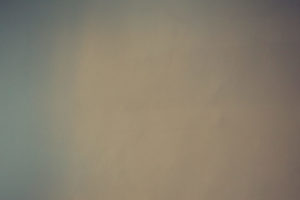
Experiment Two: Ziatype infused with pigment, 2018

Experiment Three: Ziatype infused with pigment, 2018

Experiment One: Ziatype infused with pigment, 2018
Are you chasing curiosity?
One of the most disheartening things to me is hearing others talk about what they want to do but have never taken any serious steps to achieve. I don’t mean wild dreams about a trip to the moon, or those brainstorming sessions where fragmented ideas get tossed out into the air like a handful of confetti: I’m talking about smaller, seemingly insubstantial things in life.
I found myself perplexed at the grocery when a woman behind me called me courageous for purchasing sunchokes. She went on to explain that she walks by foods that pique her interest but she’s too afraid to try new things in case she doesn’t like them. In her mind, that would be a waste. My response was that price of this vegetable was well worth quelling my curiosity. Perhaps I wouldn’t like it, but at least I would have the knowledge of that preference which, to me, also holds value.
I bring this curiosity to my work. A few years ago I got interested in hand-processing photographs. I felt limited by textures and surfaces available from mainstream vendors. There were trendy new products always coming in and out of the market, but these looked manufactured and inauthentic to my personal vision. I wanted something dimensional and raw.
What I’ve discovered is that many say they also desire these qualities, yet do not apply added value to the time, effort and expense it takes to create a one-of-a-kind artwork. We’ve been spoiled by a world of digital technology and instant gratification. We fear taking risks and value assured success above stumbling through exploration.
If you don’t understand alternative processing, here is a brief explanation:
Instead of taking a photograph and clicking print, much of this work takes several hours, sometimes stretching out over 2-3 days to complete. A photograph is captured digitally, enhanced within the computer and inverted so it can be printed out with specific inks on special paper as a contact negative (not the tiny negatives you may remember from film days). From there I work with fine European watercolor papers, or more recently have worked on a gorgeous Thai bamboo paper which I purchased directly from the craftsman living in Chiang Mai.
I select a process, which is essentially a recipe of chemicals and/or precious metals which become light-sensitive when mixed together. Then, applying it to my paper with a paintbrush, I wait for the emulsion to dry before placing the negative on top and exposing it in sun or UV light where parts of the paper begin to darken and a photograph emerges. From there each process consists of a different series of steps such as cleaning, making the image permanent, oxidizing, bleaching, color toning, etc. Many times, this is only the first part and once the print dries, another few layers get added on top of the same piece of paper.
And even more often, something goes wrong in the process (a single drop of water can ruin the negative, an emulsion may not be evenly brushed onto the paper, a rogue substance creates a problem, etc.). It’s heartbreaking to invest so much into one small image, only to reach the conclusion that you have to pitch this print and start over.
—
I’ll write more about this on another day, and will consider your feedback to gauge how much behind-the-scenes detail you’re interested in. The images above are from the day I experimented with infusing Ziatype-process emulsions with watercolor pigment. These are just some of the pieces I must release as I pare down my possessions before moving to India. Add a comment below or send an e-mail to be considered for another print giveaway; Experiment One, from the images above.




Leave a Reply